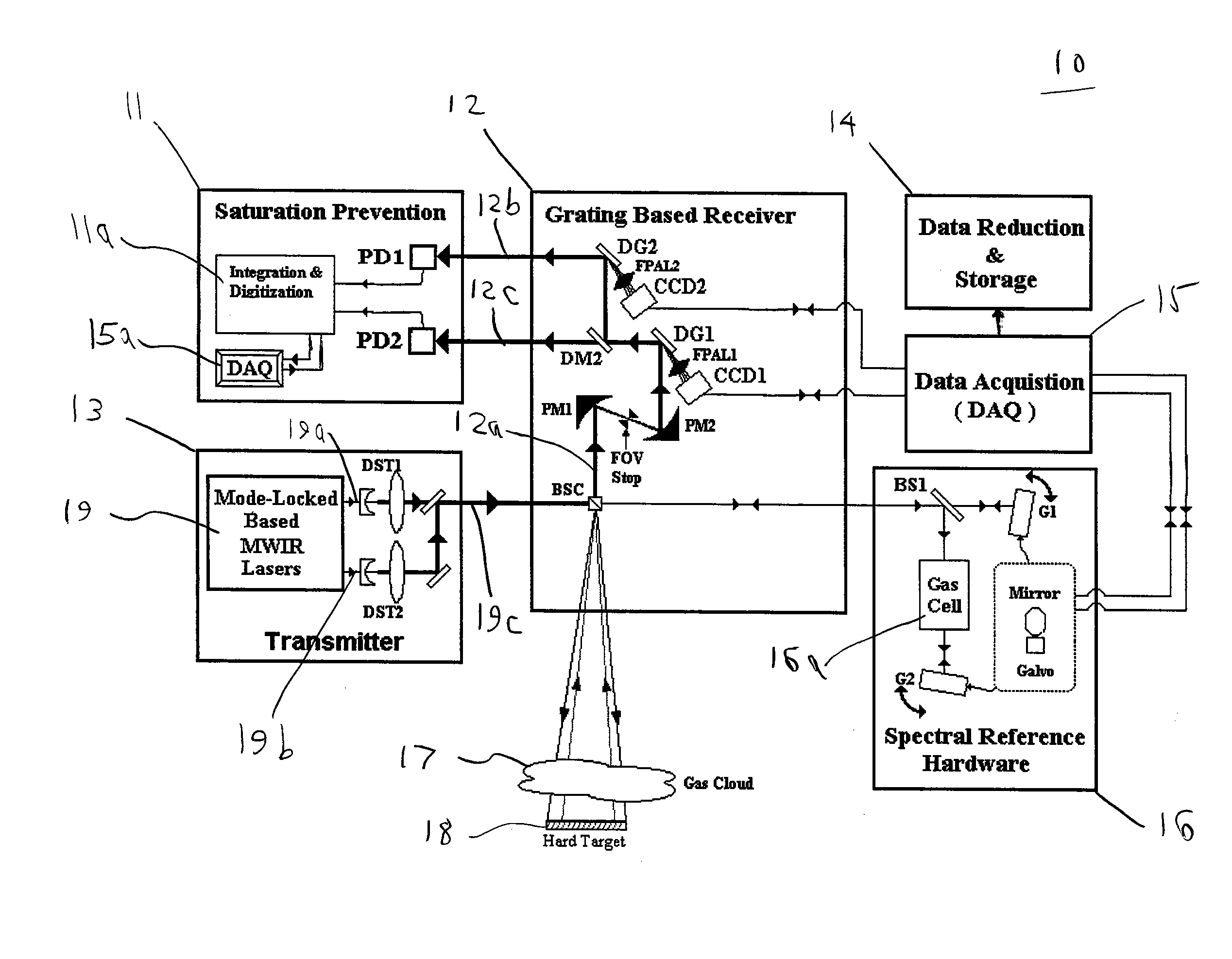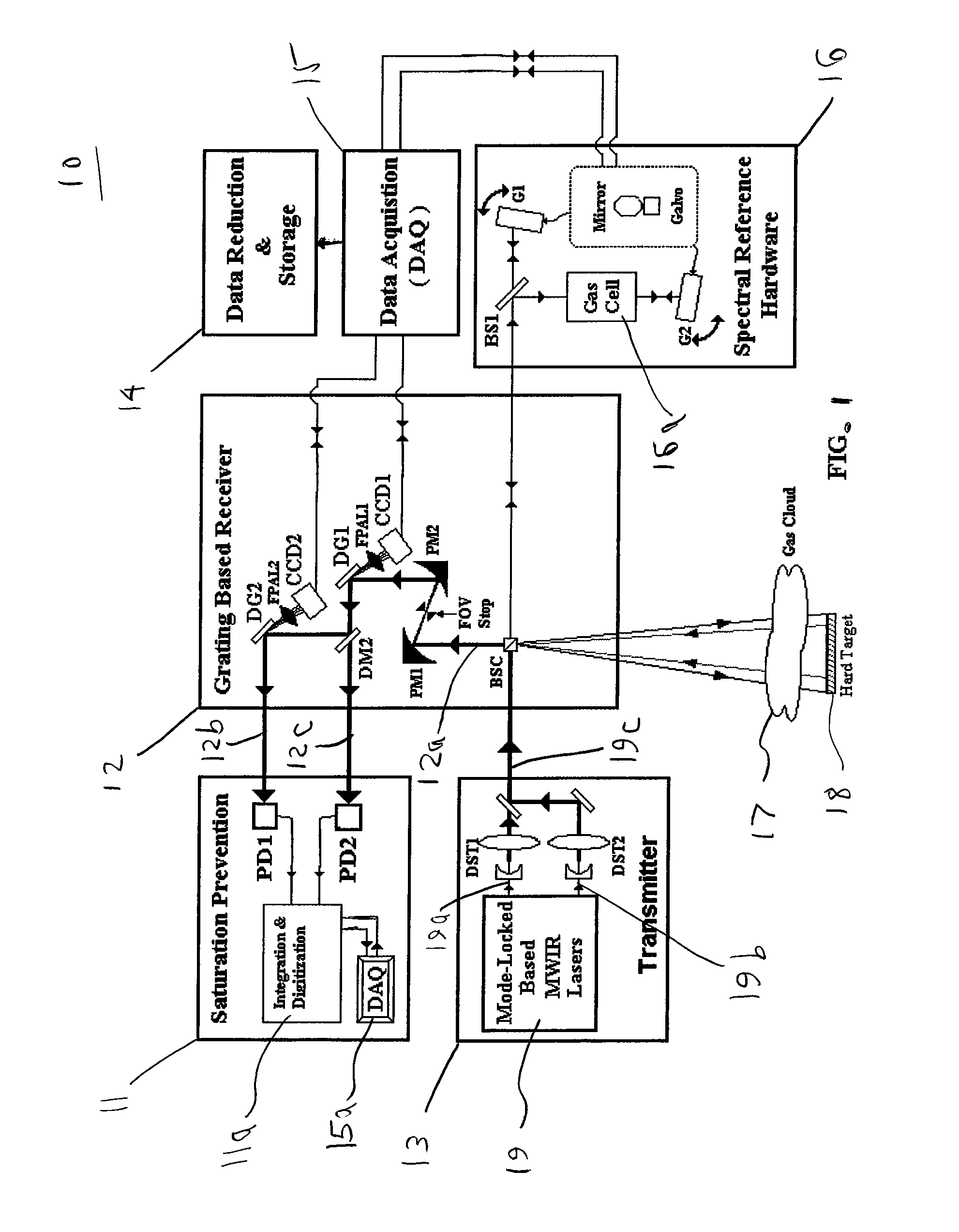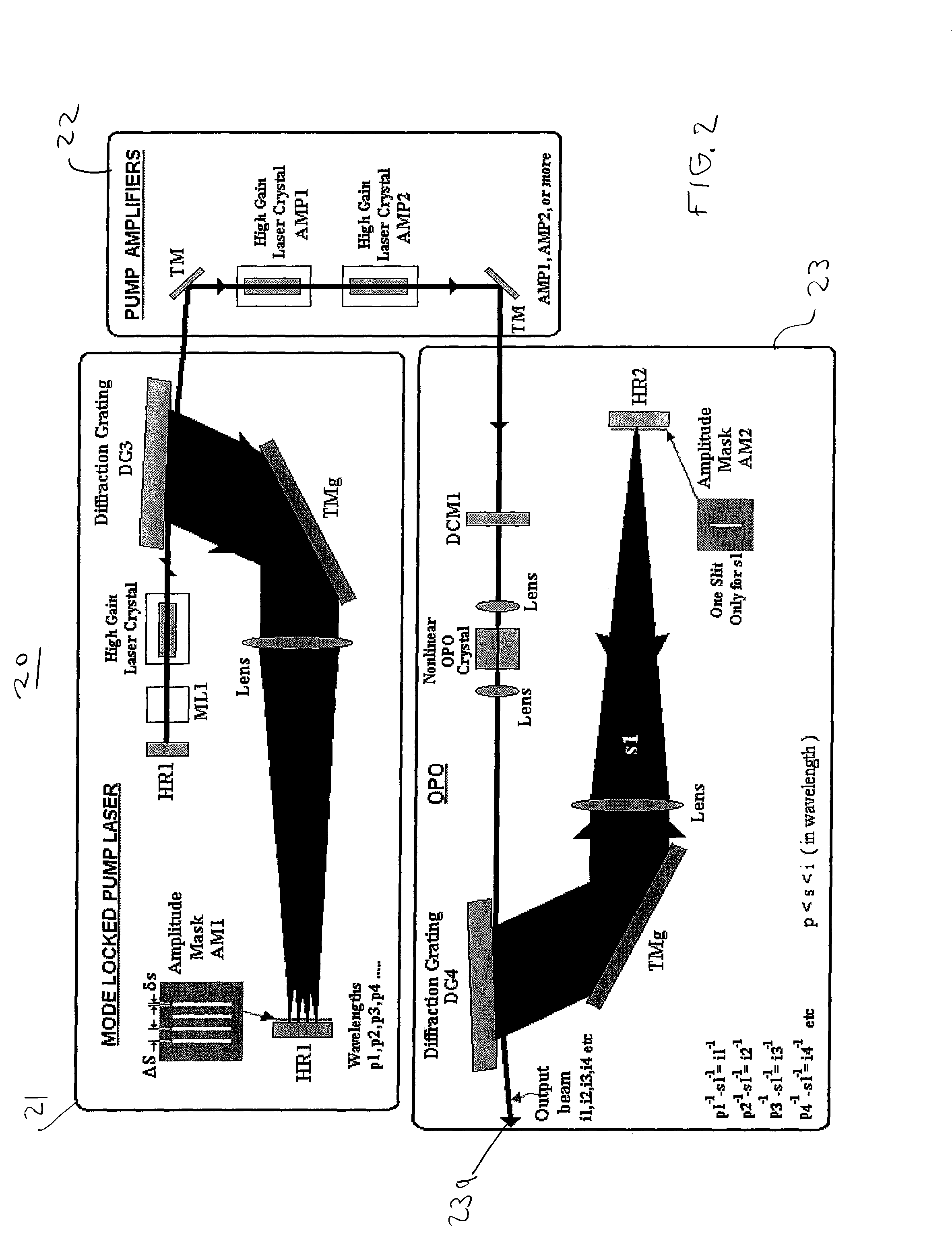System and method for simultaneous detection of a gas using a mode-locked based transmitter
a transmitter and simultaneous detection technology, applied in the field of system and method for detecting multiple gasses, can solve the problems of missed detection or false positive detection, poor data quality, and poor data quality, and achieve the effect of preventing saturation of intensity levels
- Summary
- Abstract
- Description
- Claims
- Application Information
AI Technical Summary
Benefits of technology
Problems solved by technology
Method used
Image
Examples
Embodiment Construction
[0044]The present invention includes a new type of DIAL modality, or methodology. In one embodiment, the present invention uses one or more light sources which have enough spectral content to probe (or investigate) the atmospheric species of interest. The present invention uses mode-locked based laser transmitters (or light sources) to provide stable and simultaneous broad spectral content. In one example, described below, four spectral channels are generated simultaneously within the same optical beam. These spectral channels include sub-bands of colors, which can be resolved by a grating based receiver and measured simultaneously. Furthermore, the spectral content is contained in one beam for each gas and derived from one beam, rather than a combination of separate beams. The transmitted beam may be described as a quasi-CW signal, because the beam has a fast repetition rate, which may be between approximately 10 MHz-500 MHz. For multiple gasses, multiple beams may be combined, whe...
PUM
 Login to View More
Login to View More Abstract
Description
Claims
Application Information
 Login to View More
Login to View More - R&D
- Intellectual Property
- Life Sciences
- Materials
- Tech Scout
- Unparalleled Data Quality
- Higher Quality Content
- 60% Fewer Hallucinations
Browse by: Latest US Patents, China's latest patents, Technical Efficacy Thesaurus, Application Domain, Technology Topic, Popular Technical Reports.
© 2025 PatSnap. All rights reserved.Legal|Privacy policy|Modern Slavery Act Transparency Statement|Sitemap|About US| Contact US: help@patsnap.com



